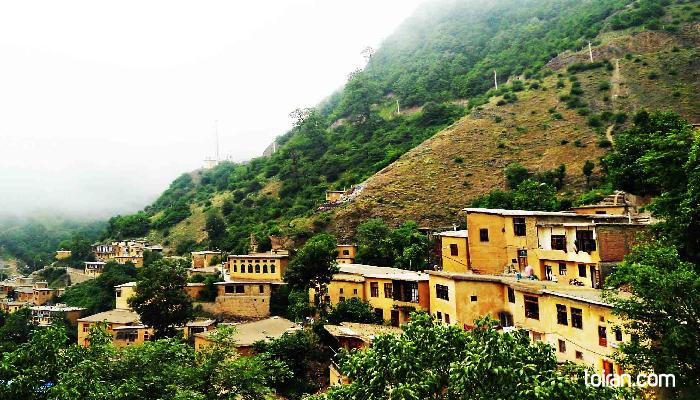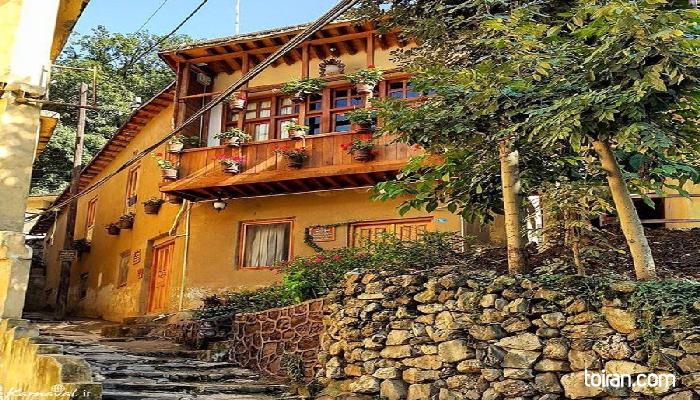The historical village of Masouleh is located 55 kilometers from Rasht in a forested mountain area. This 16-hectare village has a population of 600 and neighbors the cities of Khalkhal in the west, Masal in the north and Tarom in the south.
Masouleh-Rood-Khan River flows near to the village and its surrounding forests are populated with beech, Caucasian elm, oak, alder and ash trees. Masouleh has a combination of humid subtropical and mountain climates, experiencing mild, wet summers and cold, wet winters. The village has 87% humidity and is shrouded in thick, cloudlike fog 100 days a year.
Kohneh Masouleh or Old Masouleh, which is located 6 kilometers northwest of the village, is the original site where Masouleh was founded. The site sits atop a hill on which the ruins of stone walls are still visible. Archeological excavations have found that these walls belonged to rooms and homes with iron melting furnaces. Traces of ceramics and metal tools from the 10th and 11th centuries have also been found at the site.
About 800 to 1,000 years ago the people of Old Masouleh abandoned the site for unknown reasons and gradually relocated to the current village along with people from other parts of the country.
Masouleh is a tiered village in which the roofs of homes higher on the slope serve as courtyards/paths for homes lower on the slope. Masouleh courtyards/ paths are connected via stone steps. There is a 100-meter difference from the highest point of the village to the ground. The village consists of four quarters: Khaneh-bar, Masjed-bar, Asad Mahaleh and Kesh Sar.
Homes are mostly two-story structures and rarely single- or three-story. A large Masouleh home consists of a hallway, basement, storage room, stairs that connect the first and second floors, bathroom, guest sitting room, family living room, winter family room and a small Iwan (room vaulted on three sides). Smaller homes are much simpler and more compact.
Mudbrick, wood rafters and wild moss are the main materials used in Masouleh structures. The wild moss that grows abundantly in the village insolates structures against water damage. Once every year, Masouleh residents apply yellow mud to the exterior of their homes and cover roofs with lavender mud both of which are found on the banks of Masouleh-Rood-Khan River.
Masouleh Bazaar, the open-air market that is considered the economic heart of the village, has a view of the forest and houses iron smithing, knife making and Chamoosh Douzi (handmade, embroidered leather footwear) workshops as well as grocery stalls and bakeries.
Masouleh has three Imamzadehs (mausoleums built in honor of the direct descendants of the Prophet), one of which is inside the village and the other two are in nearby mountains. The village has a number of 20- to 30-meter waterfalls and several mineral springs with therapeutic properties. Masouleh and Old Masouleh were registered as National Heritage Sites in 1976 and 2007 respectively.







Amazing historical village, pictures can not explain the beauty of this place highly recommend visiting here :)